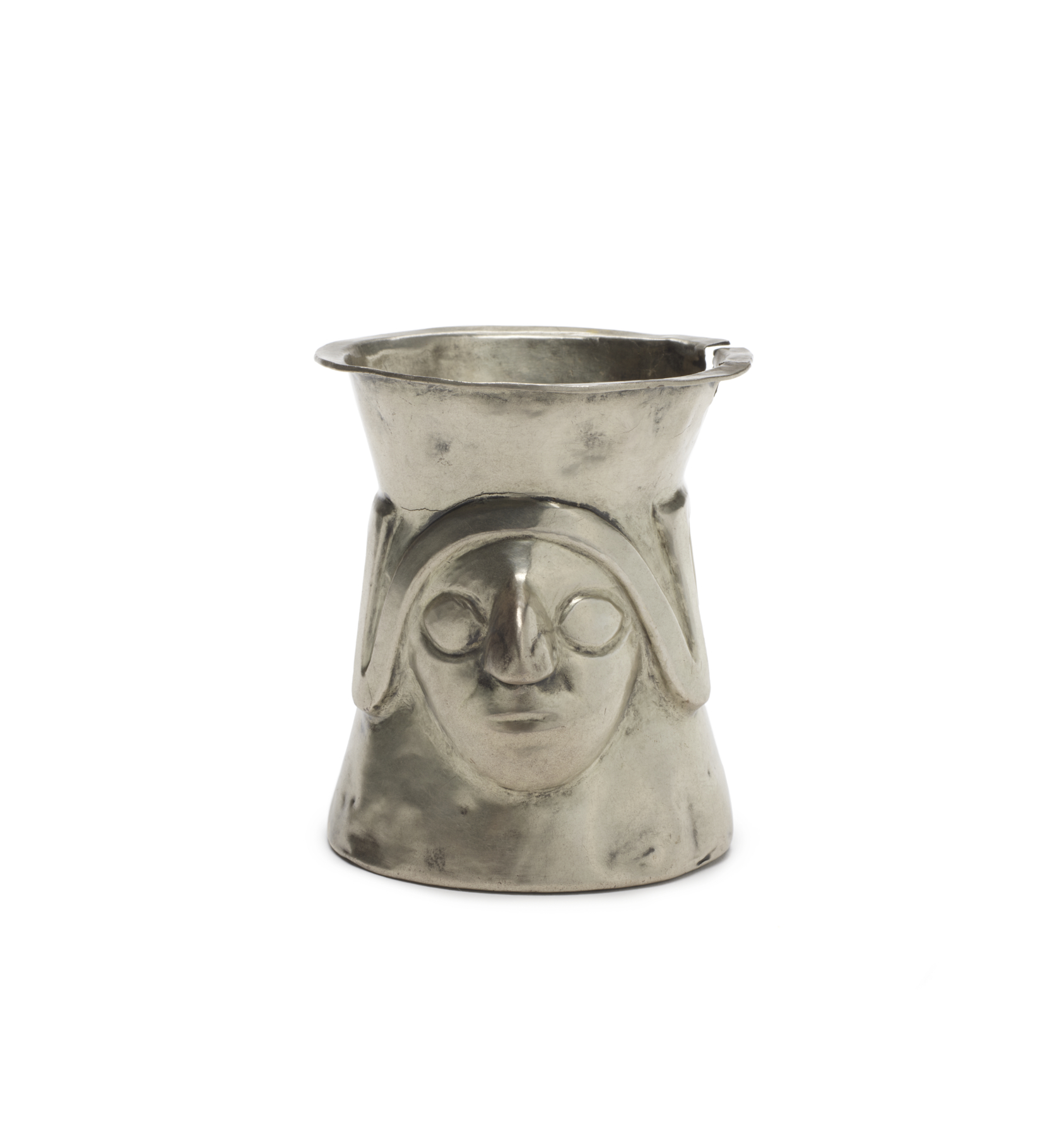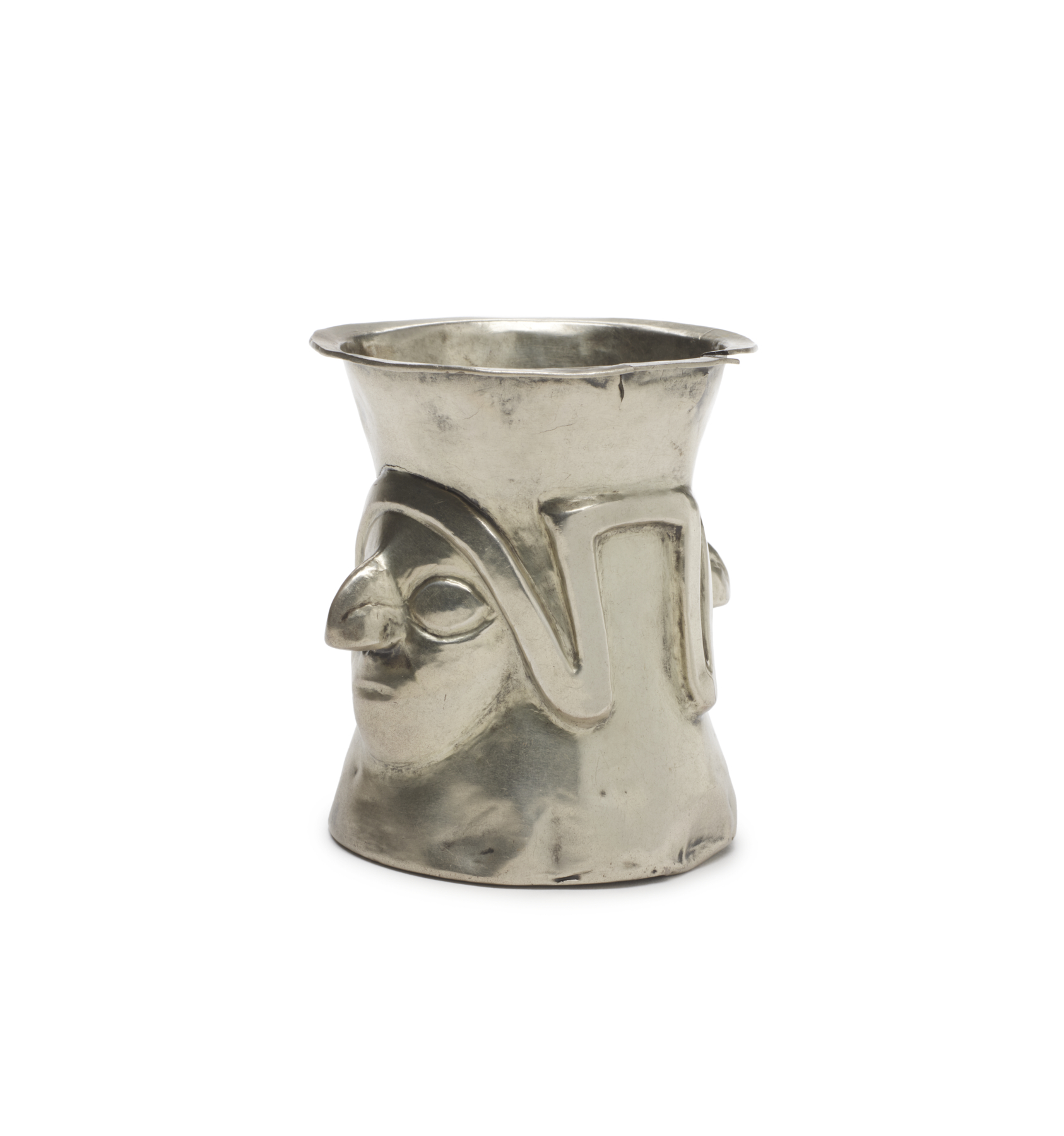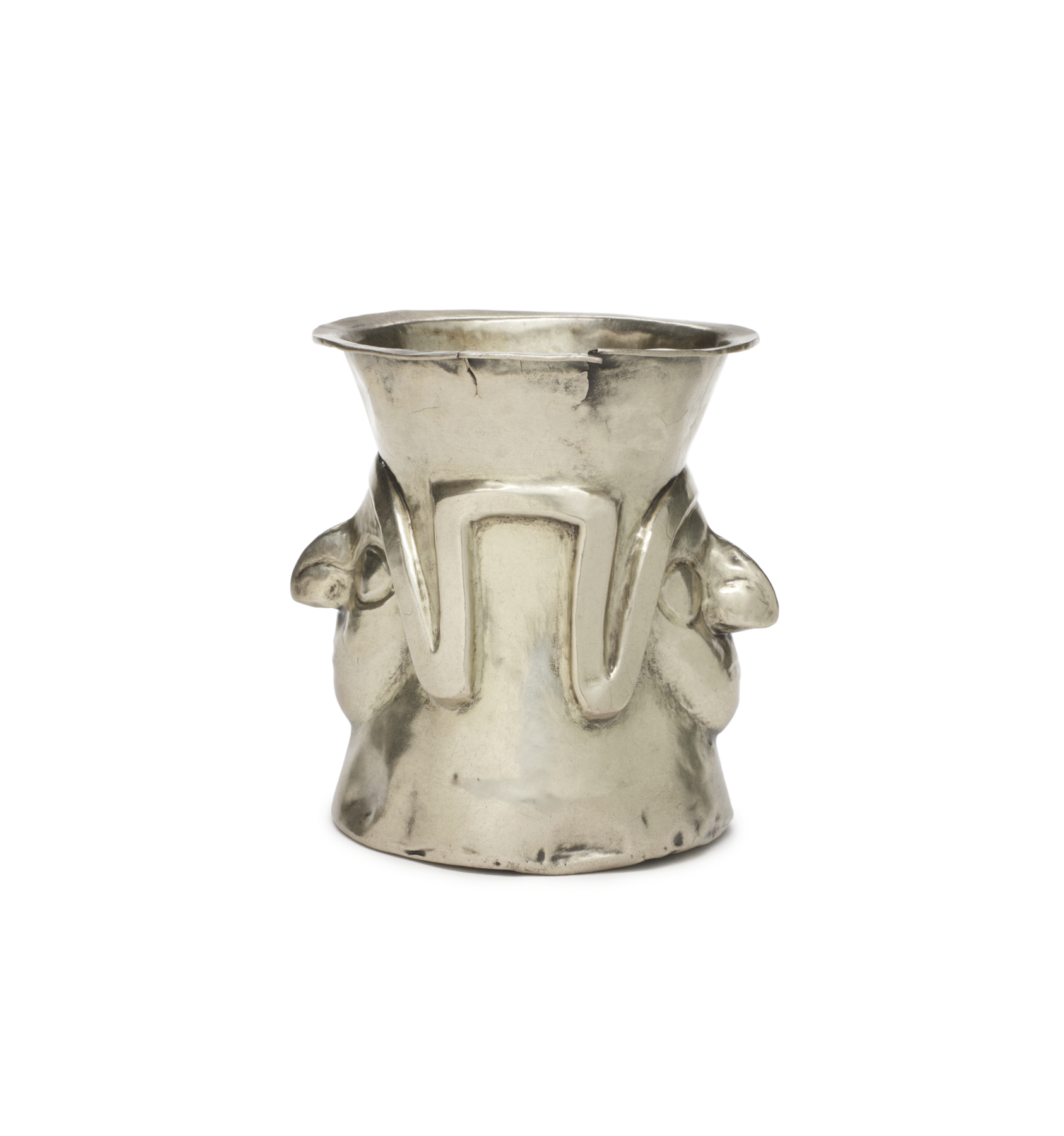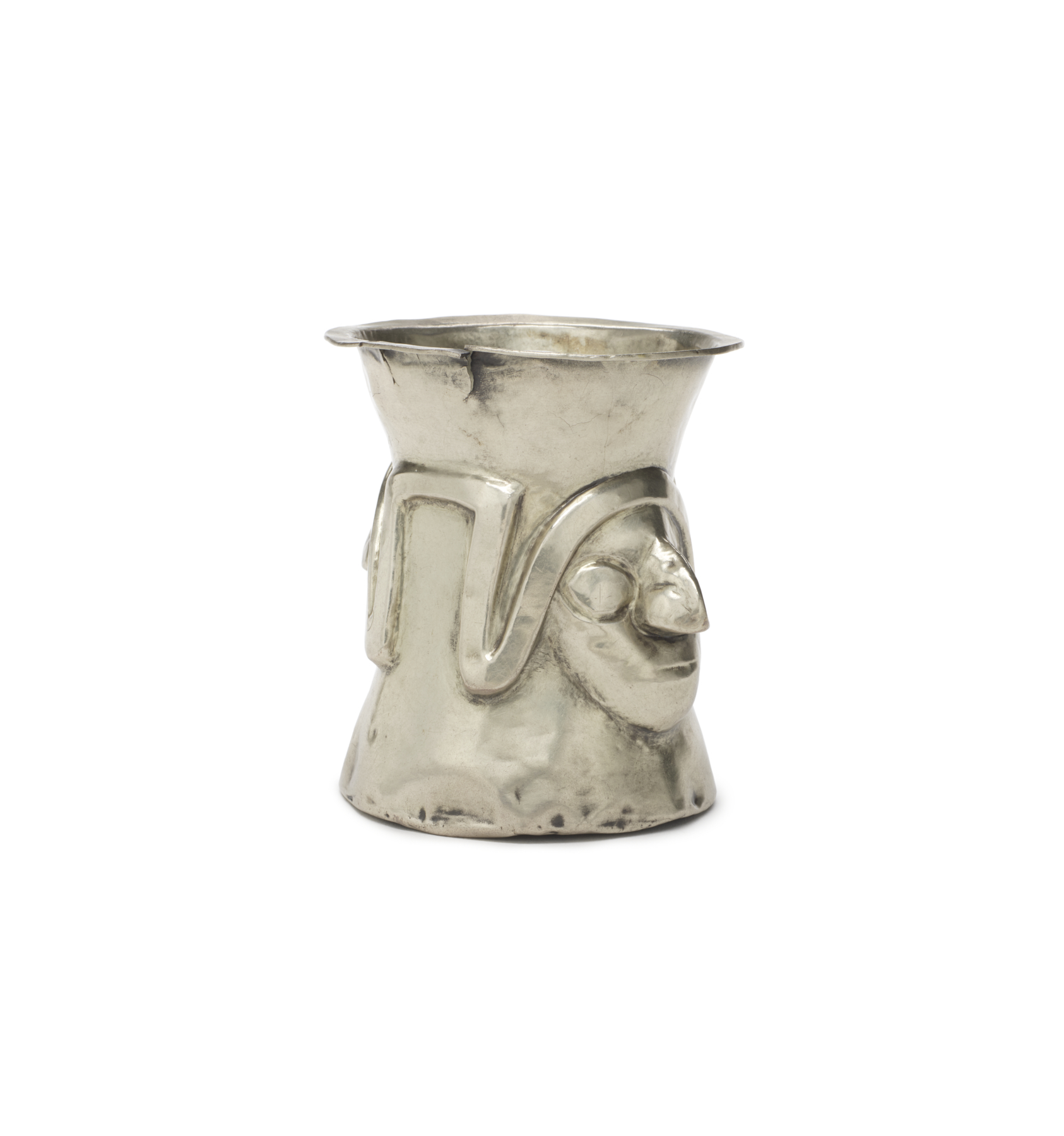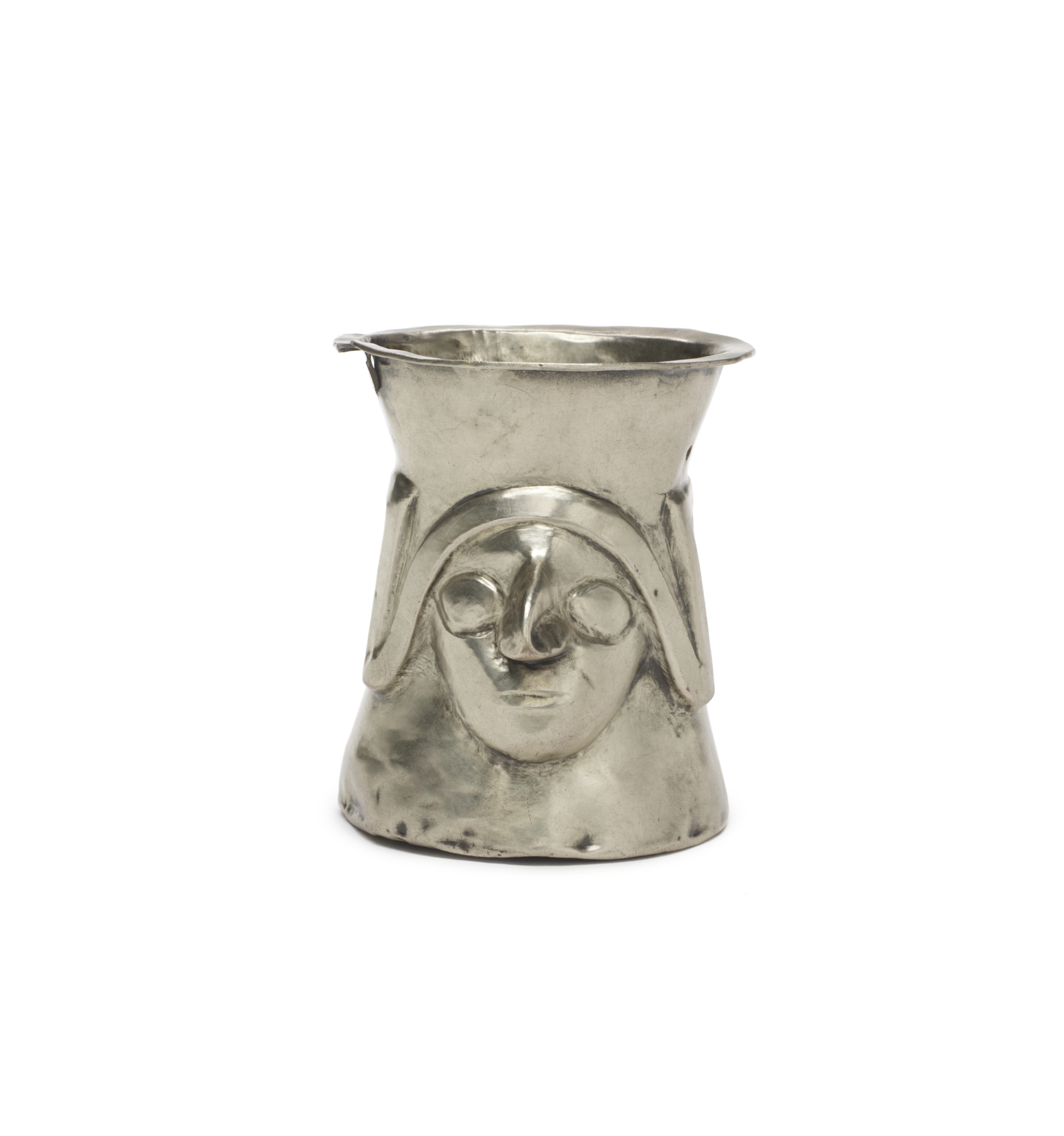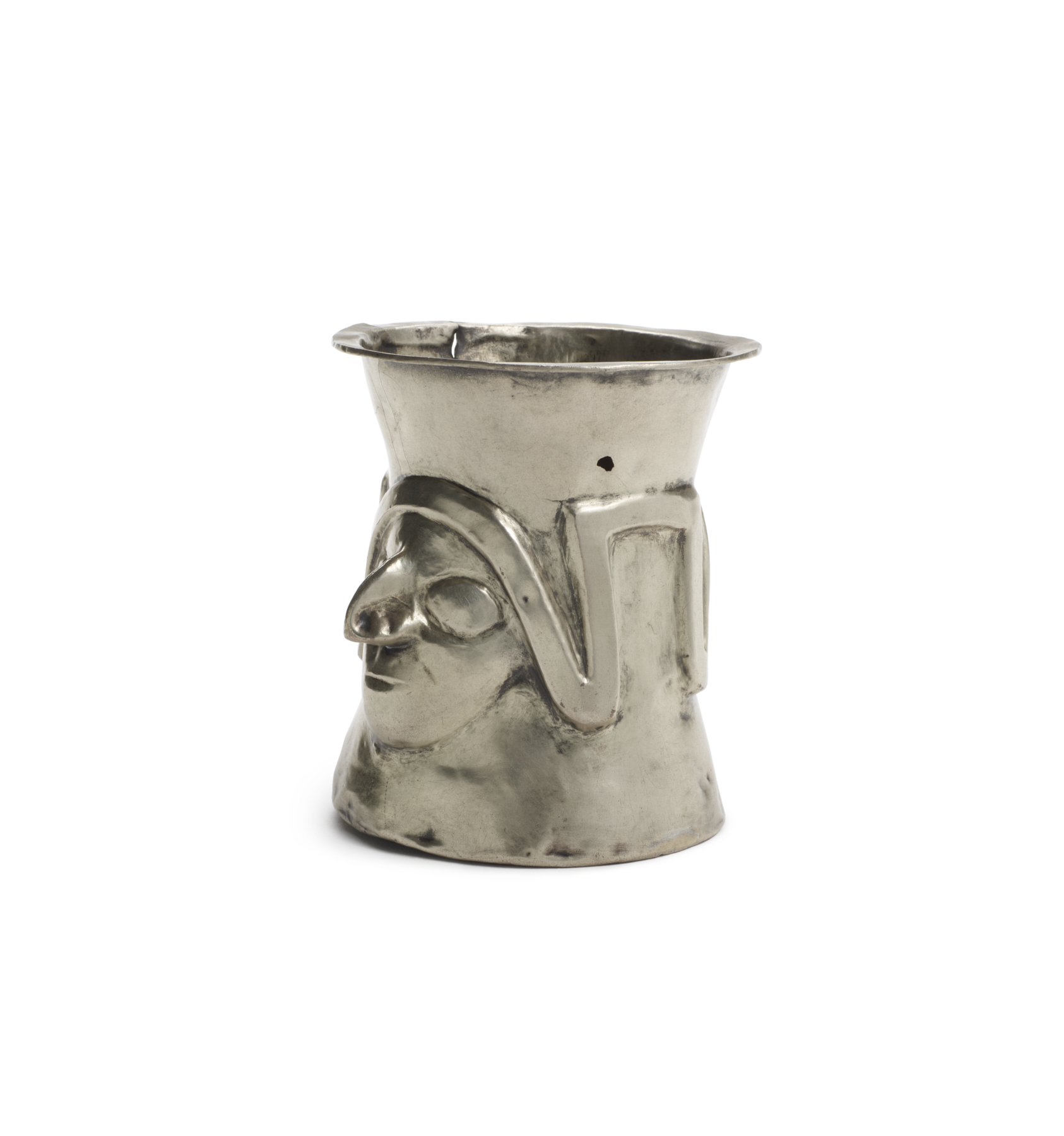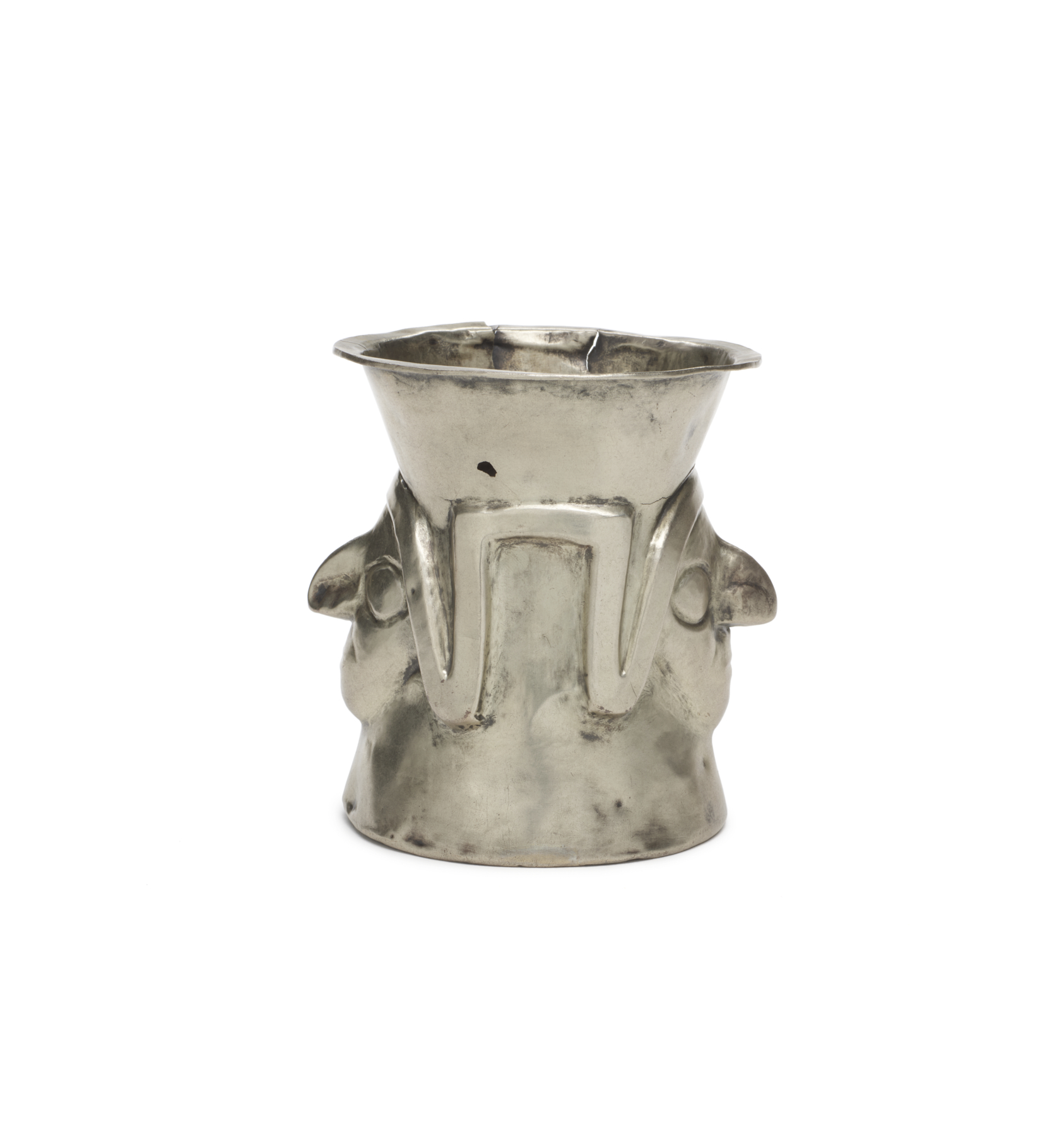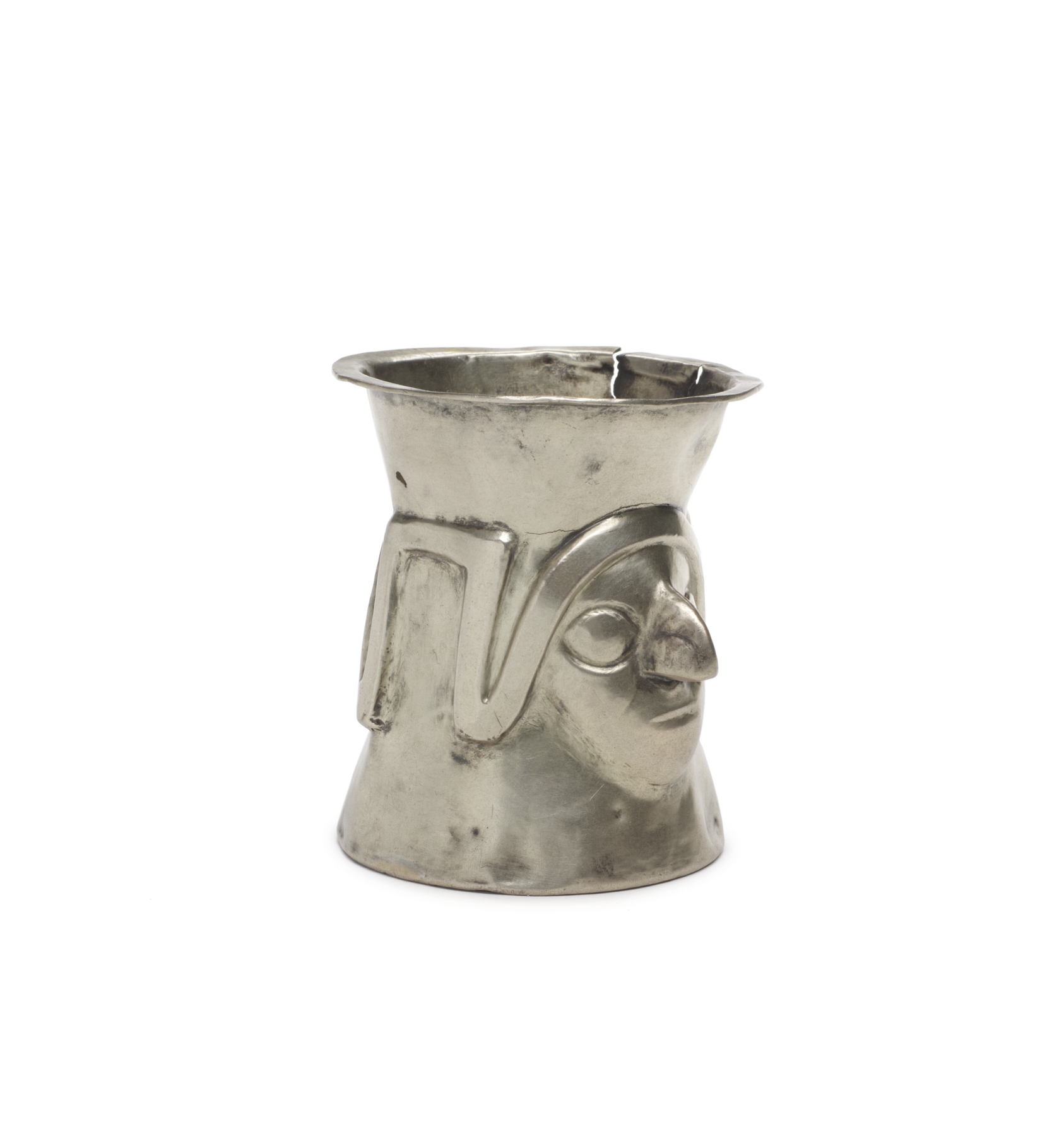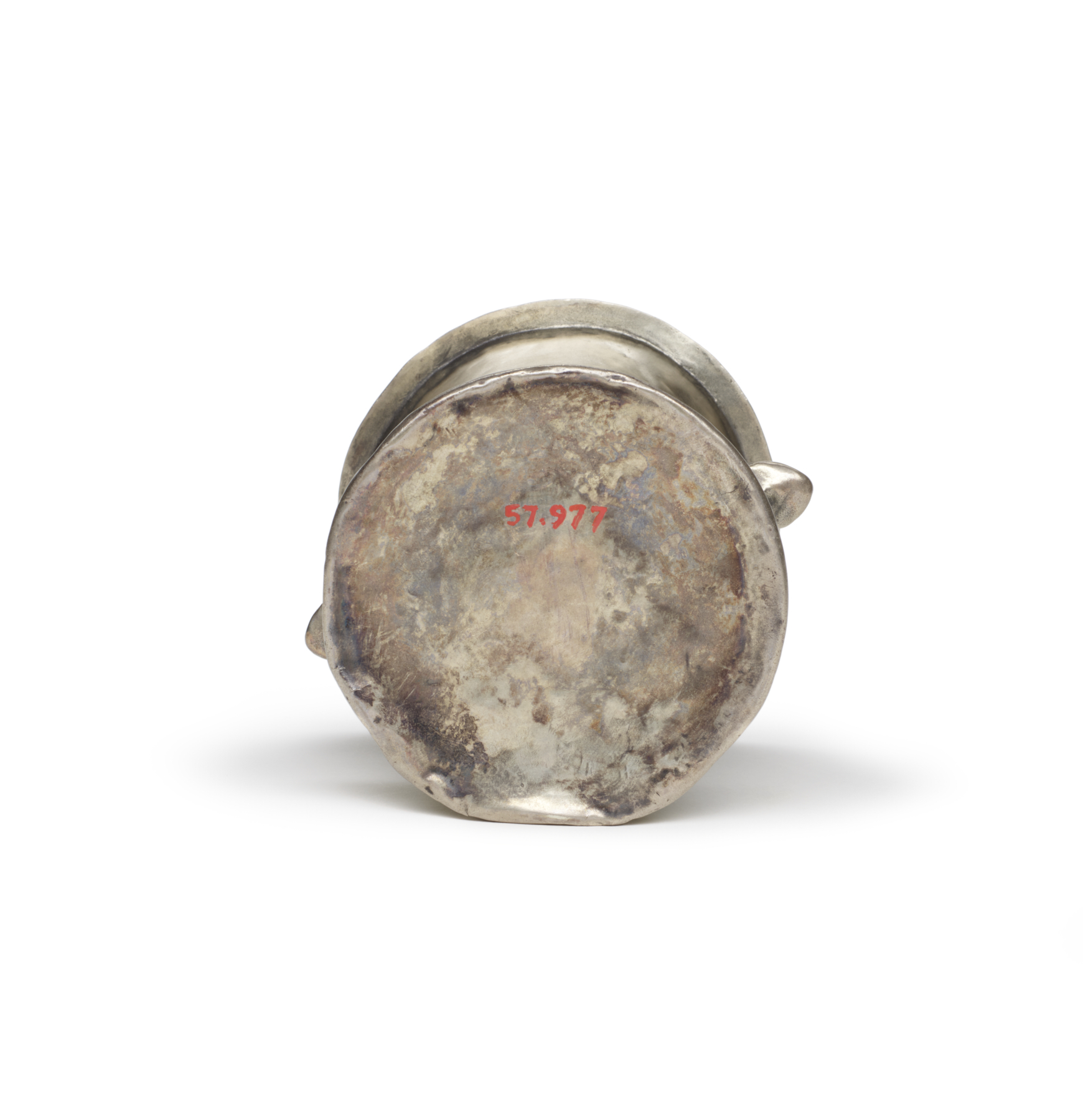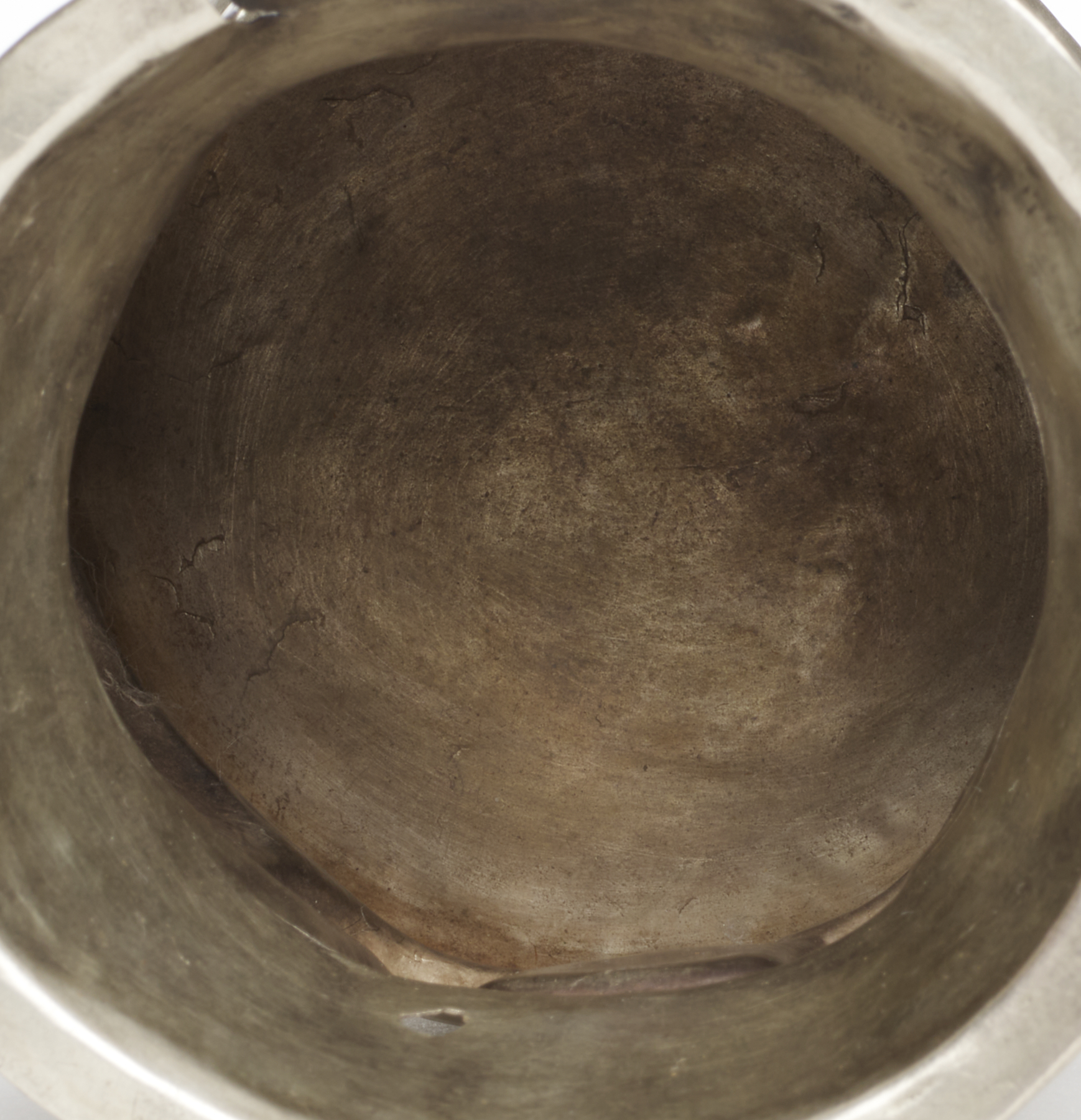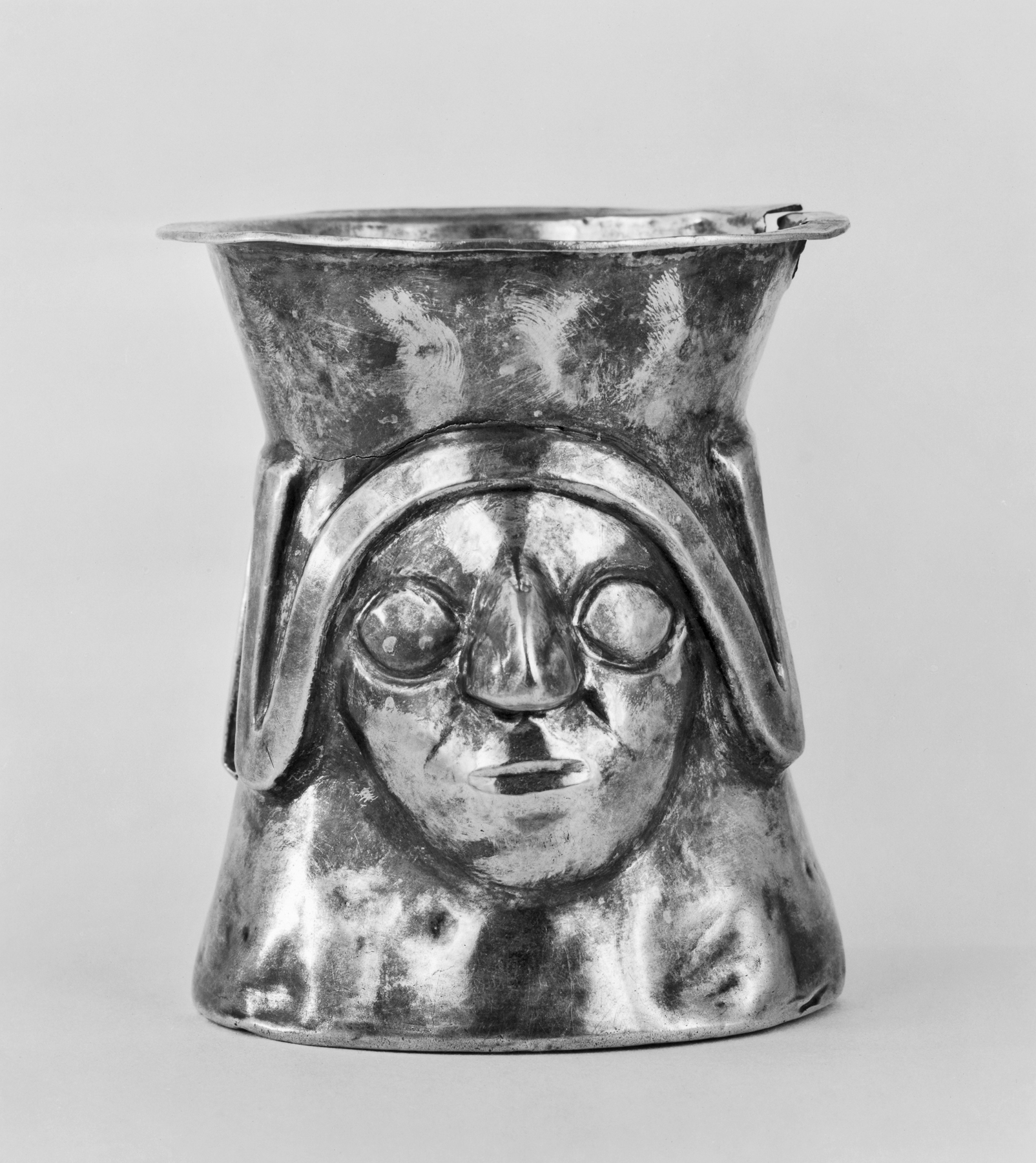Drinking vessel ("Aquilla")
(Ancient Americas )
This cylindrical vessel displays a human face with a prominent hooked nose, large disk-shaped eyes, and a very small mouth--a form that is repeated on each side of the cup's body. Two lines which may represent stylized snakes entwine themselves around the cup, and form the top and sides of the faces.
This is an example of the drinking vessel form known by the later Inca people of Peru as an "Aquilla" (when made of gold or silver) or a "Kero" (when executed in wood.) These vessels were very important for their use in the ritual exchange and consumption of the mildly alcoholic corn beverage known as "chicha." Such vessels had been made and used for hundreds of years prior to the rise of the Sicán culture ca. 600 AD. However, the civilization's development and broad use of metalwork is evident here in the double faces of the vessel linked by sinuous lines.
Provenance
Provenance (from the French provenir, 'to come from/forth') is the chronology of the ownership, custody, or location of a historical object. Learn more about provenance at the Walters.
Henry Walters, Baltimore, 1897 [by purchase from Tiffany & Co., New York]; Walters Art Museum, 1931, by bequest.
Geographies
Peru (Place of Origin)
Measurements
H: 4 × Diam: 3 7/16 in. (10.2 × 8.8 cm)
Credit Line
Acquired by Henry Walters. Almost certainly the work referred to as a "Peruvian chalice" on an invoice from Tiffany & Co. of 1 October 1897.
Location in Museum
Charles Street: Second Floor: Latin American Art / Arte Latinoamericano
Accession Number
In libraries, galleries, museums, and archives, an accession number is a unique identifier assigned to each object in the collection.
In libraries, galleries, museums, and archives, an accession number is a unique identifier assigned to each object in the collection.
57.977

